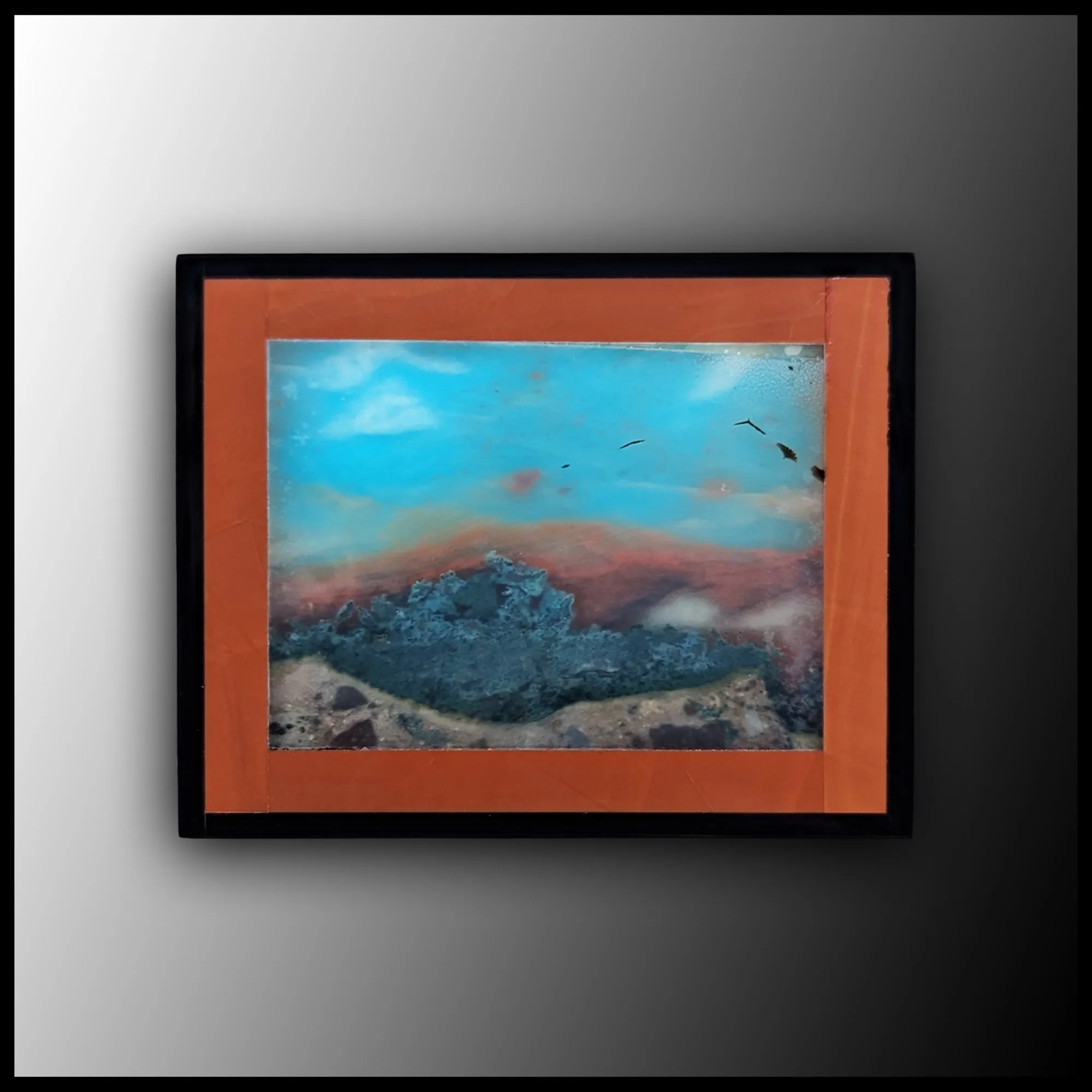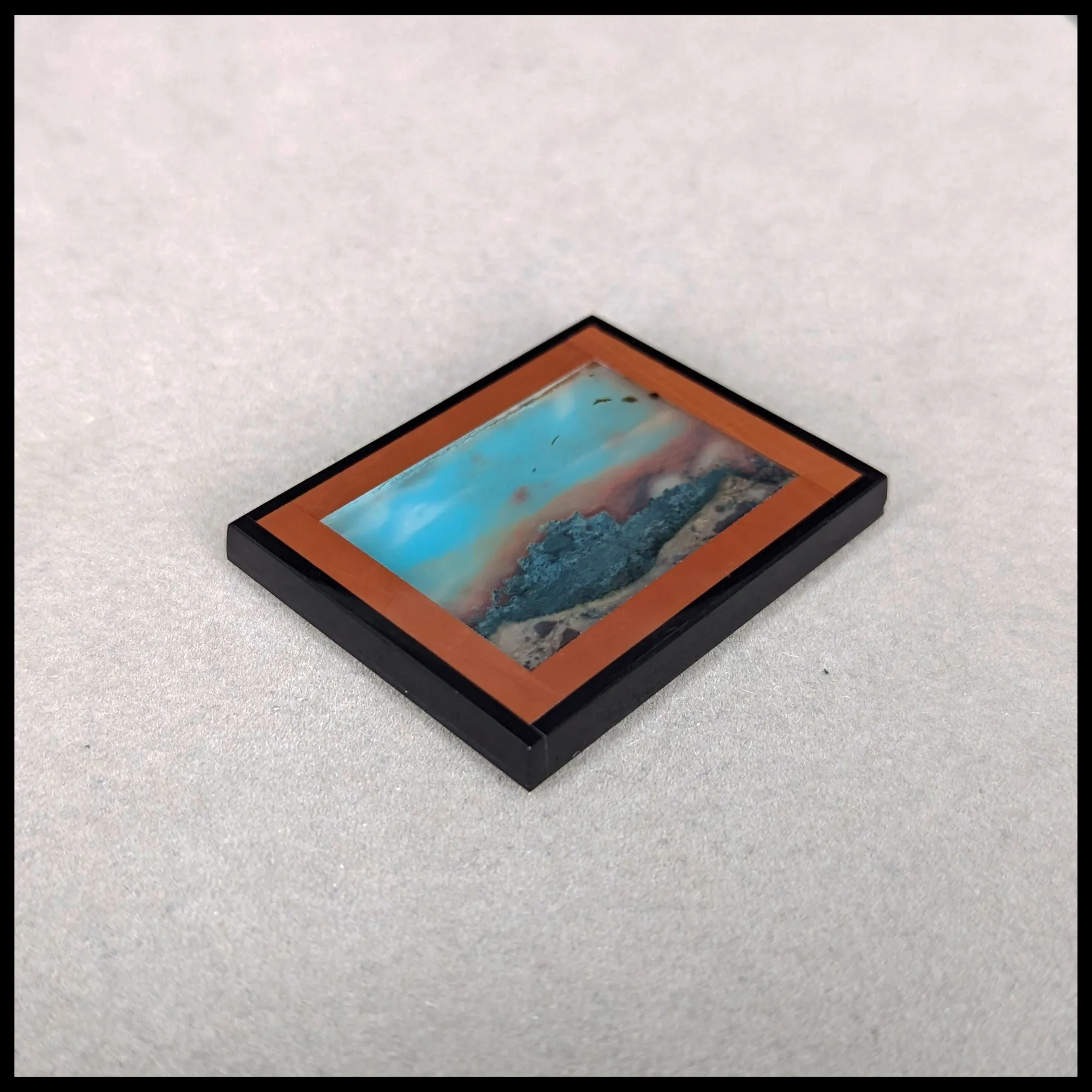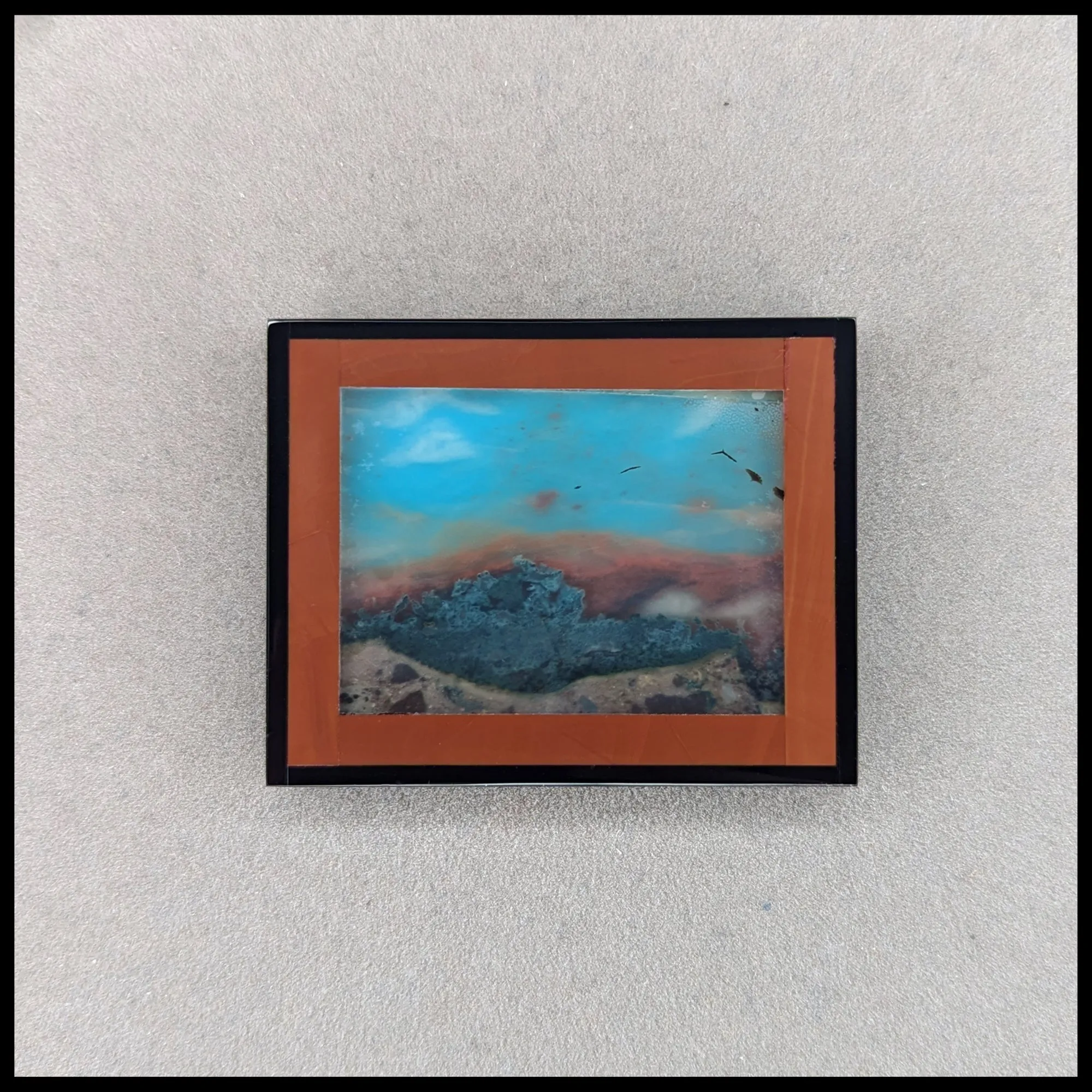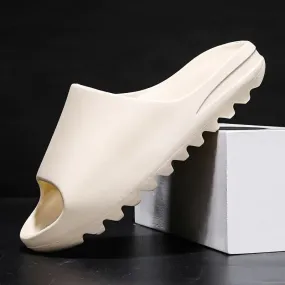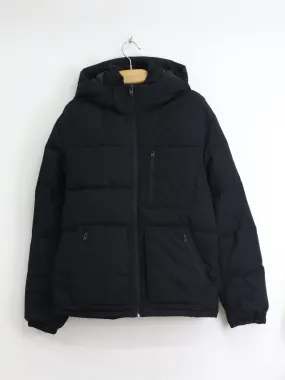This polished intarsia contains multiple layers of stone, with the center containing Montana Moss Agate, Wiggins Fork Moss Agate, and unknown agate, and Turquoise; completed with a double border frame and final black backing. The cabochon is constructed from 13 individual pieces.
This scene combines multiple layers of agate over a blue turquoise backing. The deepest agate layer has fluffy white clouds within the clear section, and eventually fades into a background with a reddish hue. This agate came from one of Gene's collections of rough slabs for intarsia use that he found from years ago, so its specific locality is unknown. After this layer is the Wiggins Fork Moss Agate, which has a clear top section, mossy green foliage, and an earthy tan ground from the agate's matrix. Finally, a layer of clear Montana Moss Agate tops the center section. This layer has a few specks of black to create tiny birds in the sky, and gives the entire piece a uniform, mirror-like polish over the layer with rougher matrix beneath.
Montana Moss Agate
Wiggins Fork Moss Agate
Unknown Agate
Turquoise
Black Basalt
Border:
Red Jasper
Black Onyx
50mm x 39mm
Intarsia: The Gem Shop’s founder, Eugene Mueller, has an MFA in painting and has won awards in the Cutting Edge Competition® for his intarsia, and has crafted and/ or designed many of the pieces available here. For thousands of years artisans have been using stone, striving to create the most beautiful scene possible. This process is commonly referred to as Intarsia. Intarsia traces its history back to the Italian Renaissance, and was called pietra dura or pietre dure. This is a term for the inlay technique of using thinly cut and polished stones to create images. The stonework is glued stone-by-stone to a substrate after having previously been sliced and cut in different shape sections; and then assembled together so precisely that the contact between each section is practically invisible. Intarsia items are generally crafted on green, white or black base stones. Traditionally Intarsia pieces have a flat polish, but more contemporary pieces are more freeform and have a dome polish, and are often referred to as “composite cabochons.” Intarsia is a high expression of lapidary art requiring a close mastery. Each piece is eccentric and highly collectible – a true work of art.




